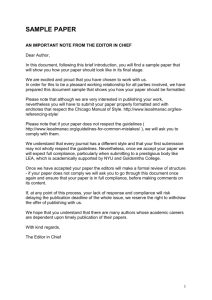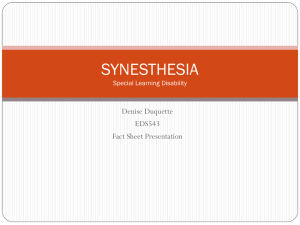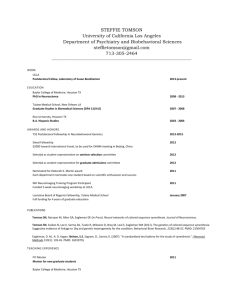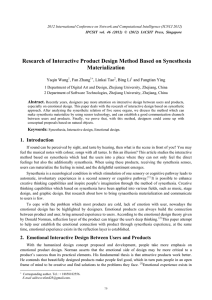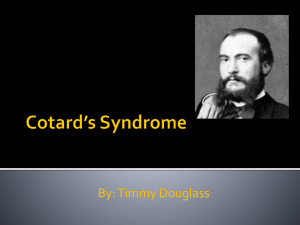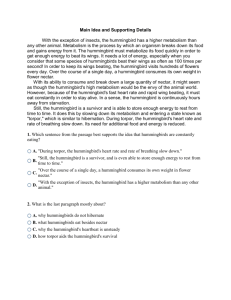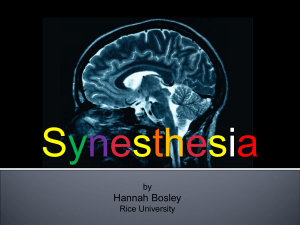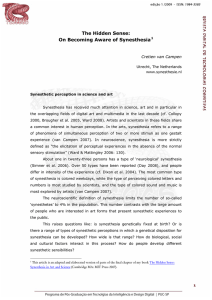brain disorders
advertisement
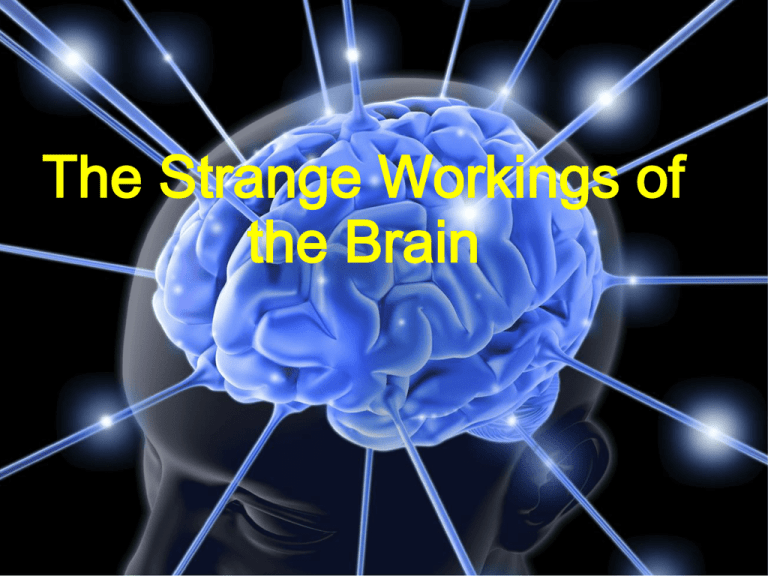
The Strange Workings of the Brain Outline Phobias Phantom Limbs Prosopagnosia and the Capgras Delusion Synesthesia Memory Consciousness Phobias http://www.youtube.com/watch?v=ta-FGE7QELQ Phantom Limbs • Sensation that missing limb is still present • Often painful • Can sometimes be controlled, sometimes act on their own accord • Not necessarily the same as missing limb – Missing arm felt “6 inches too short” • Related to mapping of body onto brain • Mirror treatment Cortical Homonculus Phantom Limbs • Sensation that missing limb is still present • Often painful • Can sometimes be controlled, sometimes act on their own accord • Not necessarily the same as missing limb – Missing arm felt “6 inches too short” • Related to mapping of body onto brain • Mirror treatment provides visual feedback Mirror Box Treatment Prosopagnosia and the Capgras Delusion • Prosopagnosia: inability to recognize faces – Can follow from traumatic brain injury • Usually associated with damage to fusiform gyrus (part of temporal lobe) – Different forms: • Apperceptive: severe, can’t even tell gender of person, ‘faces make no sense’ • Associative: can’t make links between face and person – Subject may have emotional response without conscious recognition Prosopagnosia and the Capgras Delusion • Capgras Delusion: person holds a delusion that a friend, spouse, parent, etc. has been replaced by an identical-looking impostor • Thought to be like reverse of Prosopagnosia – Conscious ability to recognize faces, but without automatic emotional response • Can be caused by traumatic brain injury – Possibly due to disconnection between temporal cortex (facial recognition) and limbic system (emotions) Neurological condition in which stimulation in one cognitive pathway causes stimulation in another Examples: Symbol --> color or spatial location Sound --> color Symbol --> personality “T’s are generally crabbed, ungenerous creatures. U is a soulless sort of thing. 4 is honest, but… 3 I cannot trust… 9 is dark, a gentleman, tall and graceful, but politic under his suavity” Can test for synesthia 1 in 23 people have mild synesthesia Likely due to cross activation of different brain regions Testing for Synesthesia “T’s are generally crabbed, ungenerous creatures. U is a soulless sort of thing. 4 is honest, but… 3 I cannot trust… 9 is dark, a gentleman, tall and graceful, but politic under his suavity” Can test for synesthia 1 in 23 people have mild synesthesia Likely due to cross activation of different brain regions Synesthesia can be beneficial to those effected Synesthetes are truly gods among men Can aid memory – we’ll see this in a bit Many artists have synesthesia Famous Synesthetes include: John Mayer, Pharell and Eddie Van Halen!!! Some think that synesthesia can be related to the development of language Kiki or Booba? Memory • Impressive capacities for memory: – Solomon Shereshevsky • Russian dude active in the early 20th c. • Could reproduce incredibly long lists of sounds, words, formulas, etc. without error after indefinite amounts of time • Diagnosed with 5-fold synesthesia – Music color, touch taste, etc. • Would memorize things by placing them in imaginary landscape – Might forget something if he couldn’t find it in this landscape Memory • Impressive capacities for memory: – Shass Pollak: Jewish mnemonists who memorized more than 5,000 pages of 12 books of Babylonian Talmud – A pin would be placed on a word, let us say, the fourth word in line eight; the memory sharp would then be asked what word is in the same spot on page thirty-eight or fifty or any other page; the pin would be pressed through the volume until it reached page thirty eight or page fifty or any other page designated; the memory sharp would then mention the word and it was found invariably correct. Memory Disorders • Henry Gustav Molaison (H.M.) – Anterograde amnesia: can’t form new memories – Bad epilepsy brain surgery, removed parts of medial temporal lobes – Lost ability to form new long term memories – Could still learn new motor memories, but wouldn’t remember having learned them • K.C. – Intact semantic memory, no episodic memory – “unable to describe an event that took place in school that specifically included him; however, he knows that he went to school, and he retains the knowledge that he gained there“ • Clive Wearing – Memento syndrome as result of Herpes simplex – ‘Waking up’ every 20 seconds – 8:31 AM: Now I am really, completely awake. 9:06 AM: Now I am perfectly, overwhelmingly awake. 9:34 AM: Now I am superlatively, actually awake. Consciousness • Physical theory for consciousness – Some argue that consciousness must be a quantum phenomenon • Orchestrated Object Reduction (Orch-OR) – Formulated by Roger Penrose and an anesthesiologist – Godel’s theorem brain can go beyond axioms/algorithms • Theorem relates to un-provable-ness of theorms Consciousness • More Penrose – For non-algorithmic physics, look to quantum theory – Collapse of wave function is probabilistic – “states are proposed to be selected by a 'noncomputable' influence embedded in the fundamental level of spacetime geometry at the Planck scale.” – Plato: pure values and forms exist in abstract realm – Penrose: this realm is the Planck scale – Suggests that brain contains these isolated quantum systems – possibly in microtubules inside neurons THE END
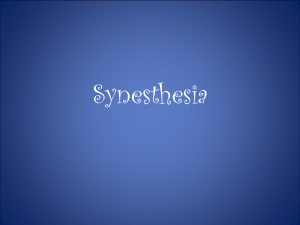
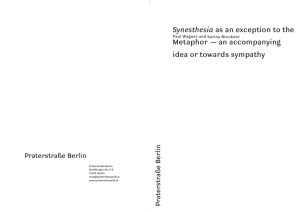
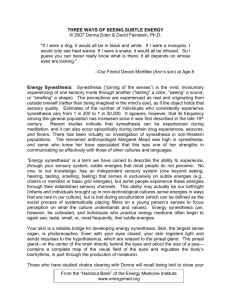
![We touch with our skin[1]](http://s3.studylib.net/store/data/009693549_1-b0d3372704a5b4f0a3ee21246b5702c4-300x300.png)
